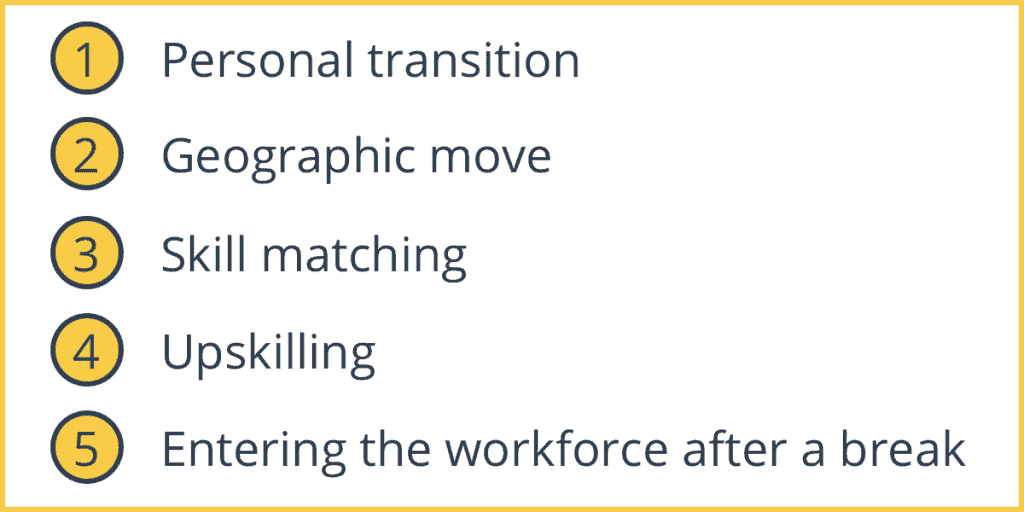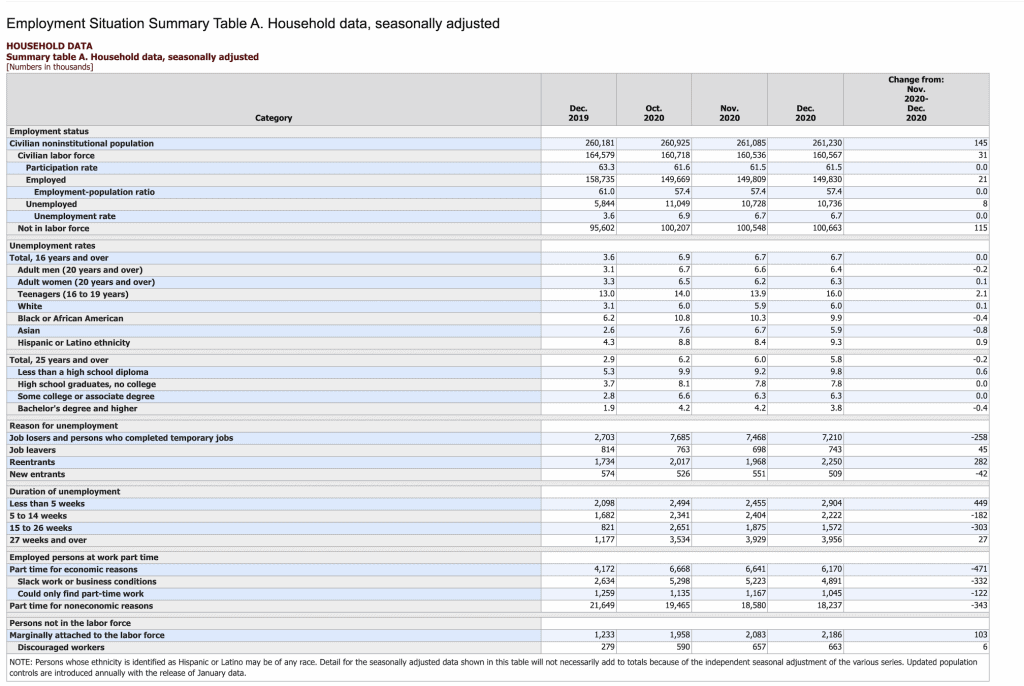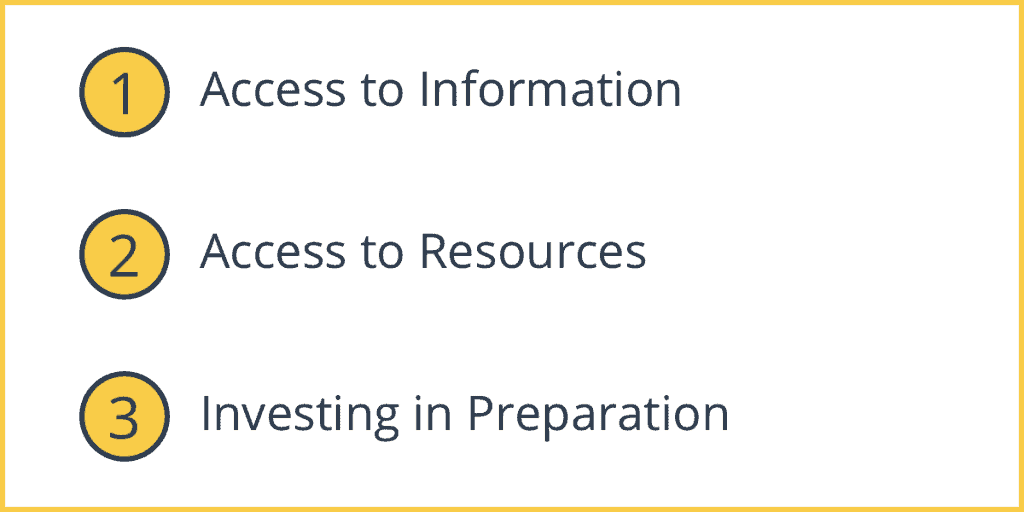Frictional unemployment is a form of unemployment that arises due to an economy’s employment transitions. It takes place in a healthy and stable economy with plenty of growth. Workers that create frictional unemployment include those who are changing their jobs and those who are first joining the workforce.
Key Takeaways
Frictional unemployment exists when a person transitions from one job to another. It is typically voluntary and takes place during a brief period of time. In this article, we will explore:
- How frictional unemployment appears in an economy;
- The factors that cause frictional unemployment to persist;
- Real-world examples of frictional unemployment;
- The extent to which it actually indicates a strong economy;
- Ways to reduce the burden of frictional unemployment on individuals and society.
What is Frictional Unemployment?
Frictional unemployment refers to the temporary period when individuals leave the labor force to transition from one job to another. It is usually the result of an employed person’s independent choice, rather than an employer’s decision.
Along with structural, and cyclical unemployment, it is one of the four types of unemployment that comprise the unemployment rate the U.S. Bureau of Labor and Statistics (BLS) releases each month.
Think about through a physics analogy: just as friction is the force that prevents free movement of objects, frictional unemployment prevents the free movement of labor. It slows down the job acquisition process as individuals take time to decide how they fit into the labor market.
Workers who experience frictional unemployment include those who are changing their jobs for personal reasons, those who are first joining the workforce, and those who reenter the workforce after a break. It is produced as a result of the time delays workers have in locating new job opportunities and getting hired; this is why it’s also referred to as “search unemployment” (the “search” refers to the time taken for the job search).
In most cases, this kind of unemployment is voluntary—workers in this situation are deciding to be unemployed while searching for a job that fits their requirements, rather than simply accepting the first job that’s available to them.
Characteristics of Frictional Unemployment

1. Voluntary
What most sets frictional unemployment apart from structural and cyclical unemployment is that it is typically voluntary: individuals chose to leave a job with the expectation they will find another one at roughly the same wage and skill level at a later time.
2. Brief
Frictional unemployment is temporary. It exists when an individual is transitioning from one job to another. Once an individual leaves a job, it generally takes some time before they find another one at comparable pay and qualification level. It is during this brief period of time that frictional unemployment arises.
3. Natural
In a healthy economy where the market encourages individuals to seek work that matches their skillsets and preferences, there tends to be frictional unemployment. This is because, in a strong economy, individuals can confidently leave their current job to find a position that better suits them. Though there will be a period in which the person in question is not employed, there is assumed to be another job at comparable pay available to them. Thus, frictional unemployment is a natural part of a market economy.
Frictional Unemployment vs. Natural Unemployment
Frictional unemployment, however, lies in contrast to natural unemployment, which is an economy’s minimum rate of unemployment produced by labor’s voluntary movement as well as economic forces. While natural unemployment describes workers who are unemployed because they lack needed skills or their jobs have been made obsolete by new technological developments, frictional unemployment describes workers’ voluntary moves and job changes.
Frictional Unemployment Examples
Frictional unemployment tends to occur when: workers chose to find another job that better satisfies their preferences; that is located in a preferred geographic location; that better matches their skills; that aligns with a trade; or after taking a break from the workforce.
Below are a few real-world examples that illustrate how it exists in the labor force.

1. Personal transition
Jamaal is happy with his job as a project manager at a tech firm, but he craves a different work environment that prioritizes professional development. He quits his job and is unemployed for three months while he searches for and lands a job of similar pay that calls on his existing skillset. The temporary period in which he is looking for a job is an example of frictional unemployment.
2. Geographic move
Linda’s partner secures his dream job on the other side of the country. Linda, who is a nurse practitioner, is confident that she can find a job in their new locale. The couple moves before Linda finds another job in their new town, but she quickly secures one within a couple of months. She takes time to interview with a few hospitals to make sure she finds a position that meets her expectations.
3. Skill matching
Alex, a recent graduate of engineering school, hasn’t been out on the job market much yet. Although they may have all the skills needed to get hired for plenty of attractive jobs, they nevertheless take some time to locate their first job. That time period in which new college graduates are job hunting is an example of frictional unemployment.
4. Upskilling
Lee is an electrician who decides she’d rather work as a plumber. She quits her electrician job to seek training as a plumber. Once the training is completed, she searches for and secures a new position that met her salary, personal, and career requirements even better than her job as an electrician. This is an example of frictional unemployment that demonstrates how it can benefit the economy—this individual was not happy at her current job. She took the time she needed to find one that met her needs and interests and is now more productive because of it.
5. Entering the workforce after a break
Mark took time off from work as a pilot to care for his newborn child. Once he and his family decided that they could balance work and life without a stay-at-home parent, he re-entered the labor force and looked for jobs again as a pilot. The time it took for him to secure a new position is an example of frictional unemployment. The same type of example could also extend to individuals who temporarily leave their jobs to care for aging or family members.
Frictional Unemployment Versus Natural and Cyclical Unemployment
Compared to Cyclical Unemployment
Cyclical unemployment is much more problematic than frictional unemployment. While cyclical unemployment is involuntary, frictional is voluntary. Furthermore, cyclical unemployment is heavily associated with economic recessions, when businesses let go of many employees in order to prevent profit margins from falling further. When unemployment increases during recessions, frictional unemployment will typically decrease, because workers who do have jobs will not feel confident choosing to leave them in search of other opportunities.
What Causes Frictional Unemployment?
While frictional unemployment is naturally occurring in a market economy and is mainly motivated by an individual’s choice to seek another job, there are a few causes that prolong the transition period of unemployment:
- Limited access to the Internet, job search engines, and other information processes can significantly hamper an individual’s ability to quickly find and transition to a job.
- Laborious applications that require detailed resumes, cover letters, and interviews can serve as a barrier to entry to many jobs.
- A lack of education on how to professionally apply for jobs can also hinder the success of applicants, thereby lengthening the time it takes to secure one.
However, frictional unemployment is an indicator of a healthy economy because it means that people are confident enough in the labor market that they could leave their current job to find another one they like better.
In fact, full employment is nearly impossible in a strong competitive economy. Sure, full employment could exist under a command economy if the government placed everybody in a job regardless of their people’s skills and preferences, but this would, in turn, cause massive production inefficiencies and a generally displeased populace.
However, in open, market economies, individuals can match themselves with jobs that best suit their skillset and that meet their personal needs because an alternative job does indeed exist. Therefore, frictional unemployment is inevitable in a market economy.
How to Calculate the Frictional Unemployment Rate
We can calculate the frictional unemployment rate by unpacking the unemployment rate, which is the sum of structural and frictional employment rates.
Every month, the Bureau of Labor Statistics (BLS) publishes the United States employment and unemployment data that is collected from a survey of about 60,000 households. They intentionally survey a range of different demographics and geographic areas throughout the United States to capture a snapshot of the labor force.
As part of the survey, respondents are asked the reason they find themselves unemployed. It is this reason for unemployment that distinguishes whether structural or frictional unemployment occurs. For example, if an individual loses their job for lack of demand for the industry, structural unemployment is implied. But if an individual leaves their job to take a break from work or to pursue a new career, frictional unemployment is implied.
The following reasons for unemployment correspond to frictional unemployment:
- Job leavers – people who report voluntarily leaving their job
- Reentrants – people who re-enter the labor force after a break
- New entrants – people who have never been employed and are now looking for a job.
You can view this data on BLS’s Employment Situation Summary Table A. It changes each month[LG1].
Employment Situation Summary Table A (Updated Jan 8, 2021)

To calculate the frictional unemployment rate:
- Add up the number of Job leavers, Reentrants, and New entrants from Employment Situation Summary Table A. This is the number of people who are reported to experience frictional unemployment.
- Multiply this number by 100.
- Divide by the total number of people who are reported to be Unemployed (look at the top of the table). Make sure you are dividing by the number of people, and not by the unemployment rate itself.
- The result is the percentage of unemployed persons who experience frictional unemployment.
Note: BLS considers a person to be unemployed if they are actively searching for work for four weeks. If they are not actively searching for work, then they are simply deemed not part of the labor force and are not calculated as part of the unemployment rate.
Solutions for Frictional Unemployment
There will always be frictional unemployment in a strong, market economy. In fact, frictional unemployment can be an indicator of a strong economy. This is because the presence of frictional unemployment shows that people have enough confidence in finding another job should they choose to lose their current one.
However, there is always room to expedite the time people spend searching for employment. Here are a few ways individuals, governments, and career resource centers can offer solutions for frictional unemployment:

1. Access to Information
Stronger access to information that enables workers to search for and identify work that suits them more quickly and more accurately is one solution for frictional unemployment. Job search innovations like automatic job alerts or algorithms in search engines like www.monster.com and www. indeed.com can offer applicants job listings that accurately meet their qualifications and preferences more quickly.
2. Access to Resources
Access to the Internet enables people to take advantage of the services mentioned above. Not everybody has a reliable Internet connection; with stronger infrastructure, people would be able to find a job that suits them more quickly.
3. Investing in Preparation
Investing in interview and job application preparation, especially for new entrants, will help job applicants both portray their skills accurately and help them ask the right questions to make sure a potential job is a strong match. A detailed and professional resumé, cover letter, and a polished interview can help the applicant communicate their job expectations and initiate a conversation about whether or not a potential job is a strong fit. It takes time and skill to write cover letters and conduct interviews; support from career services organizations can offer support.
Advantages of Frictional Unemployment
Frictional Unemployment is an indicator of a healthy economy because it shows that people are willing to forgo their current employment position with confidence to find another job that better suits their preferences. In the long-term, frictional unemployment is a sign that people are finding work they like, which increases the potential for higher productivity. In the end, the economy will benefit from individuals specializing in and doing work that aligns with their skills and preferences because it is likely they will be more productive.
Unlike structural unemployment, frictional unemployment does not imply a downward pressure on wages, where demand for labor lags behind the supply of demand. Theoretically, the market price of labor is unchanged under frictional unemployment because there is assumed to be another job available for the person who chose to leave their job. All that is lost is the time it takes to transition from one job to the next—and that is a cost presumably factored in by the individual who chooses to leave their job.
Moreover, frictional unemployment is an indicator of job mobility, since it shows that individuals can fluidly transition between jobs.


Amazing explanation. I am waiting more on other Economics topics. and it is better to focus on developmental economics as the current top is it